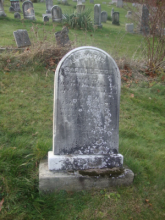Article
The practices related to the ritual act of disposing of a dead person’s body. Burial customs reflect the world views and religious beliefs of the particular culture, and differ in various communities. In most Western societies, for example, death is feared and rejected, but the dead are commemorated and cherished through traditions such as regular visits to the grave site, placing pictures of the deceased around the house, and holding on to objects that belonged to the dead. In the Christian tradition in particular, the belief in an afterlife allows for a continuation of the relationship between the living and the dead.
In contrast, in Navajo culture death itself is not feared, but accepted as a fact of life. However, the dead are a great source of terror, and any contact with them is to be avoided. The Navajo believe that after death the body is insignificant, and even the identity of the person disappears. In order for the spirit to be properly released to the underworld, all ties must be cut. In many cases that includes a careful destruction (often through burning) of the dead’s personal possessions, to ensure that the ghost will not linger in the world of the living as a negative, haunting presence.
"Conguity Cemetery, November 11, 2012" by TheEbonSwan2 is licensed under CC BY.
Manuscripts
References
Opposing Views
N.d. Hoffman, Jessica. Do Navajos Have Certain Religious of Burial Practices?
http://people.opposingviews.com/navajos-certain-religious-burial-practi…, accessed
September 19, 2014.

